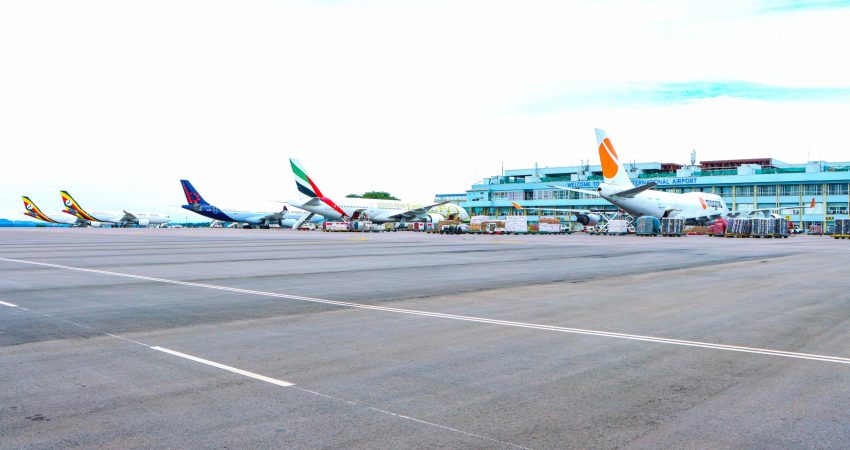
Uganda sends out feelers on joining SAATM
A bystander for years, Uganda has made its most definitive expression yet, of intent to join the Single African Air Transport market (SAATM). A meeting convened this week to discuss the issue, agreed to establish a multisectoral committee to “consider the matter further.â€
The decision came at the end of a multi-stakeholder meeting called by sector regulator Uganda Civil Aviation Authority (UCAA) on April 26, to build internal consensus around the country’s participation in the continental initiative. The proposed committee will be made up of representatives from the core government agencies such as the Ministry of Finance, the Ministry of Works and Transport, the Uganda Tourism Board, and select players from the private sector.
Pitching for SAATM at the meeting, UCAA Deputy Director General, Olive Birungi Lumonya said the proposed liberalization of air services would lift the number of air passengers. “Flying is efficient, quicker, and safer but is not utilized much as the other forms of travel. If this agreement is signed by Uganda, we will be joining the rest of Africa in reducing the cost of travel, and increasing air traffic and business,†she said.
The Wednesday meeting heard candid reasons for the delay, which were attributed to a range of factors including, the competition that the national carrier which was in the process of being revived, would be exposed to under SAATM, the likely impact on aspirations to turn Entebbe into a regional hub and the ability of existing Ugandan air operators to compete effectively with regional airlines which have a stronger financial base, better equipment, with some believed to have been supported with subsidies from their respective governments.
Uganda was also doubtful about the likely benefits accruing from the liberalization of air services amidst the entry restrictions that still exist within the African States. According to a November 2021 IATA Fact Sheet, Uganda was ranked eighth in Africa for visa openness but only 4 percent of the 24 BASA’s reviewed were fully compliant with the Yamoussoukro Decision. Citizens from 18 African countries do require a visa to enter Uganda while those from 34 others can get visas on arrival. But Ugandan citizens face entry restrictions in many African countries, which require them to have entry visas.
“Initially, Uganda did not sign the Solemn Declaration to join SAATM pending the establishment of mechanisms to give assurance to the revival of Uganda Airlines, which at that time had not commenced operations taking into consideration a highly competitive market resulting from the grant of unrestricted fifth freedom traffic rights to African Airlines,†the meeting was told.
Keen to expand
But with flag carrier Uganda Airlines partially established and keen to expand within Africa as well as parallel initiatives like the African Continental Free Trade Area slowly gaining traction, Uganda feels it can now participate in SAATM with a reasonable degree of reciprocity of benefits.
According to IATA, Uganda would get an additional 4,920 jobs in aviation and spin-off industries by joining SAATM while another 16.070 jobs would be created through “catalytic impact.â€
The economy would gain an additional $102.6 million in GDP, 151,000 extra tourism visits, $69.3 million increase in tourism spending, and 9.290 new tourism jobs.
Uganda’s junior minister for Works and Transport, Fred Byamukama said Uganda was ready to join SAATM because it would culminate into a more competitive and better-regulated aviation industry in Uganda and Africa at large. “Government will continue to ensure the country’s air links make her one of the most connected countries in the world to make it compete successfully for economic growth opportunities,â€Â he said.
Adopted from: Air Insight Group April 28, 2023
